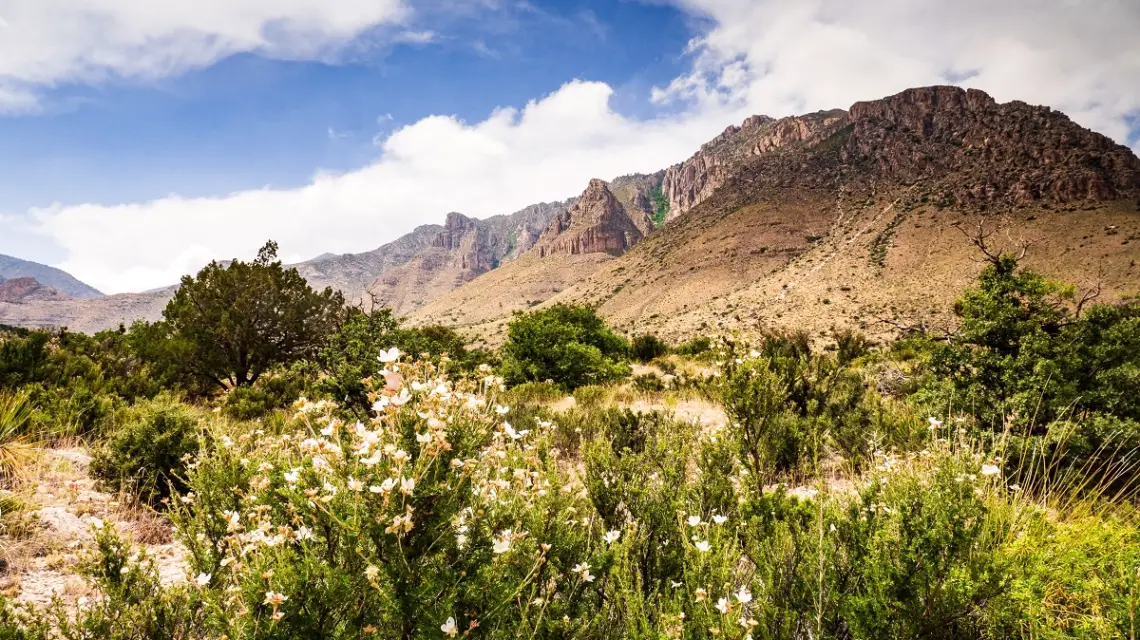
BEST Things to Do in Guadalupe Mountains National Park
Many people are not even aware that Texas actually has TWO national parks! In fact, Guadalupe Mountains National Park in far west Texas is among one of the least visited national parks in the entire United States. This statistic is just one reason to visit this underrated recreational haven, as you can enjoy the solitude and majesty of this national park all to yourself.
In this guide, let’s explore all of the best things to do in Guadalupe Mountains National Park including hiking, backpacking, camping, and exploring historic frontier sites.
Contents
- What to Know Before You Go
- Best Things to Do in Guadalupe Mountains National Park
- 1. Hike the state high ooint at Guadalupe Peak
- 2. Hike a slot canyon on the Devil’s Hall Trail
- 3. Hike to two desert springs on the Smith Spring and Manzanita Spring Loop Trail
- 4. Hike to historic cabins and the “Grotto” on the McKittrick Canyon Trail
- 5. See historic ruins on the Pinery Nature Trail
- 6. Hike to the Salt Basin Dunes
- 7. Take in the sights of Iconic El Capitan
- 8. Camp at the Pine Springs Campground or Dog Canyon Campground
- 9. Check out the Pine Springs Visitor Center
- 10. Backpack at Guadalupe Mountains National Park
- 11. See other nearby attractions
What to Know Before You Go
Here is useful information about Guadalupe Mountains National Park.
- Location: West Texas
- Closest cities/towns: Dell City, TX (45 minutes), and Carlsbad, New Mexico (1 hour)
- Closest airport: El Paso International Airport (2 hours)
- Lodging: There are plenty of lodging options, including hotels and vacation rentals in both Dell City and Carlsbad.
- Entrance fees: $10 per person
- Best time of year to visit: Fall – spring
- Pet policy: Pets are NOT allowed on hiking trails in Guadalupe Mountains National Park. Pets are only allowed in areas accessed by vehicles, such as campgrounds, picnic areas, and parking lots.
Best Things to Do in Guadalupe Mountains National Park
The rugged mountain landscape of Guadalupe Mountains National Park creates a haven of outdoor adventures to explore.
1. Hike the state high ooint at Guadalupe Peak
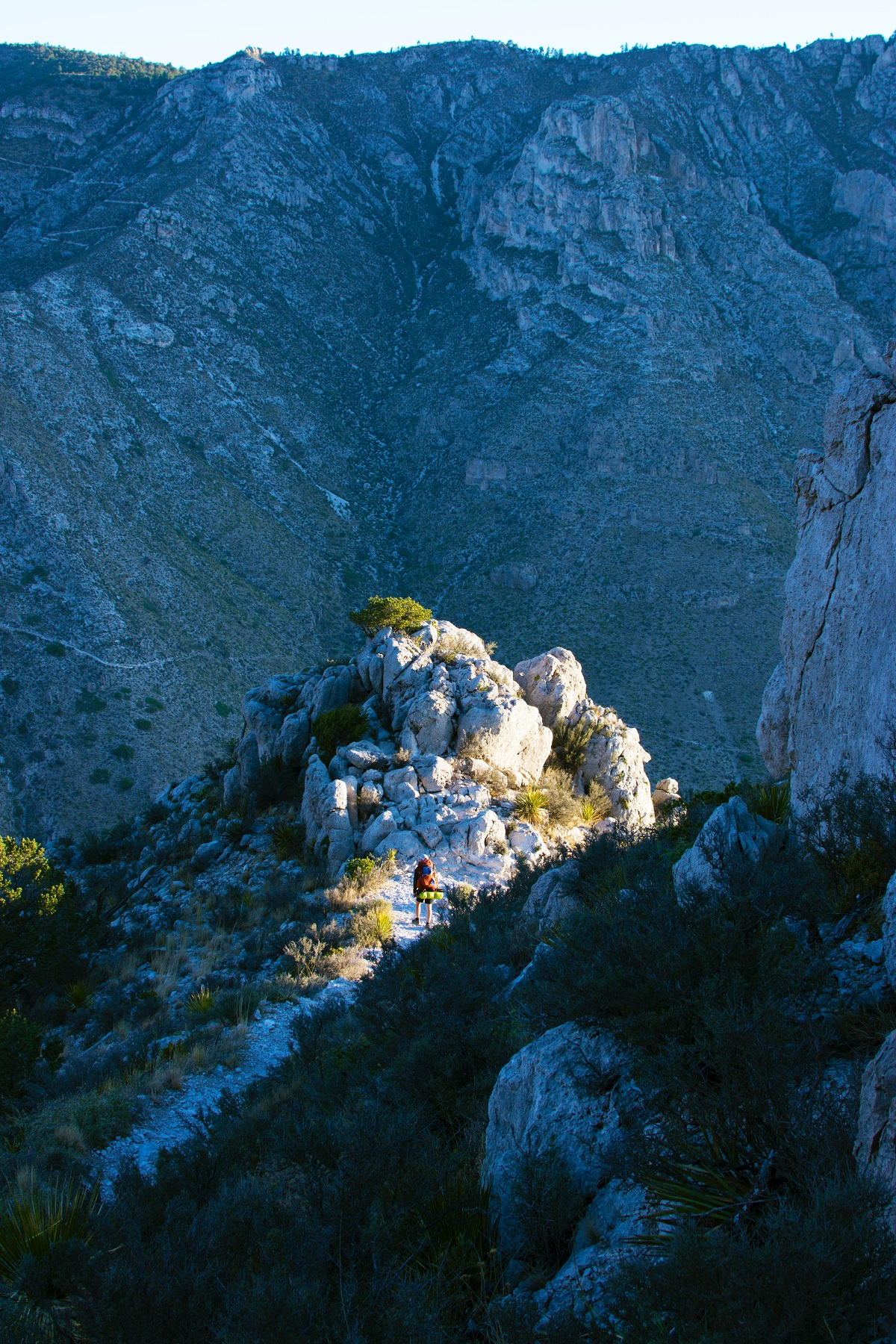
Here are quick facts on the Guadalupe Peak Hike:
- Length: 8.1 miles roundtrip point to point
- Rating: Difficult
- Estimated time to complete: 6 hours
- Elevation gain: 2,949 feet
The Guadalupe Peak hike is literally at the “top” of the best hikes in not only Guadalupe Mountains National Park, but the entire state of Texas! And that is because Guadalupe Peak is the highest point in the state, with arguably some of the best panoramic views too. For those that might have fallen prey to the common misconception that Texas is flat and boring, a hike up Guadalupe Peak will quickly prove that notion incorrect.
Not only is this an exhilarating, high altitude hike in the heart of the Guadalupe Mountains, but it is also a chance to see the unique tapestry of ecosystems and environments that are woven together in this park, with many of them present on the Guadalupe Peak Trail.
Expect to start on a trail head surrounded by vast expanses of open Chihuahuan Desert, traverse challenging switchbacks up the mountain face, continue on through shady groves of surprisingly tall ponderosa pines, before reaching a rocky, barren summit that looks out over all of Guadalupe Mountains National Park. Below the summit of Guadalupe Peak resides the iconic and recognizable face of El Capitan, and you can even spot the glistening Salt Basin Dunes in the distance.
2. Hike a slot canyon on the Devil’s Hall Trail
Here are quick facts on the Devil’s Hall Trail:
- Length: 3.8 miles roundtrip out and back
- Rating: Difficult
- Estimated time to complete: 2 hours
- Elevation gain: 600 feet
The Guadalupe Mountains have created not only epic uphill mountain hikes and stunning summits, but some intriguing slot canyons as well. The favorite slot canyon hike in Guadalupe Mountains National Park is the Devil’s Hall Trail. This trail passes through narrow canyon walls, over boulders, and up natural rock “stairways” and steps.
3. Hike to two desert springs on the Smith Spring and Manzanita Spring Loop Trail
Here are quick facts on the Smith Spring and Manzanita Spring Loop Trail:
- Length: 2.5 miles roundtrip loop
- Rating: Moderate
- Estimated time to complete: 1 hour
- Elevation Gain: 393 feet
If Guadalupe Mountains hasn’t proven its diversity yet with its mountains and canyons, you can add desert springs to the list with a hike on the Smith Spring and Manzanita Spring Loop Trail. Not one, but two desert springs feed this surprising oasis, shedding light on just how the flora, fauna, and resident wildlife survive here in the Chihuahuan Desert, at the base of the Guadalupe Mountains.
4. Hike to historic cabins and the “Grotto” on the McKittrick Canyon Trail
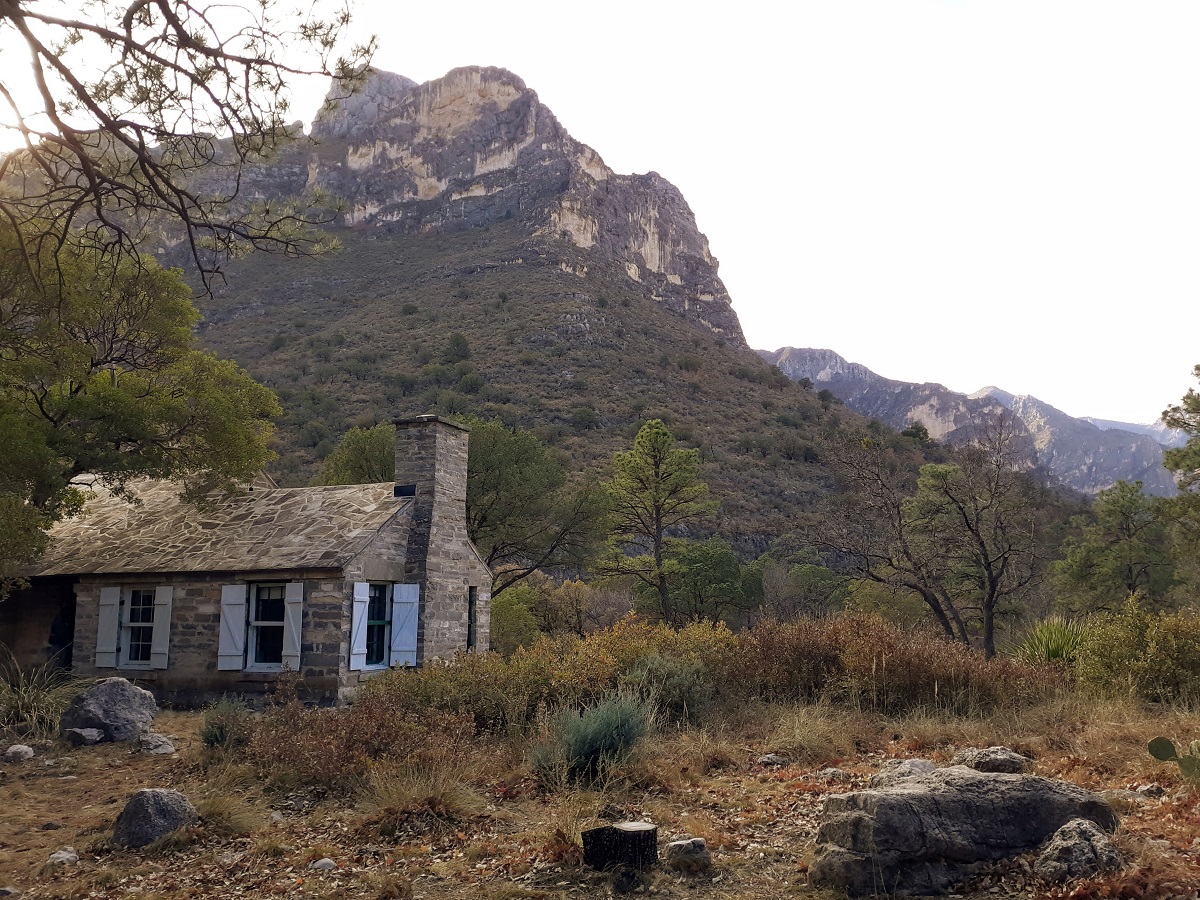
Here are quick facts on the McKittrick Canyon Trail:
- Length: 21.3 miles roundtrip out and back
- Rating: Difficult
- Elevation gain: 4,074 feet
Guadalupe Mountains National Park has some deep roots to early frontier Texas history, and this is evidenced by several historic buildings that are still standing in the park. One of the best preserved historic sites is the Pratt Cabin, which is located on the McKittrick Canyon Trail. This long distance trail is also perfect for those wishing to backpack, as there are primitive camping sites on the trail.
In addition to the Pratt Cabin, there are other notable spots along the McKittrick Canyon Trail. You can check out the mysterious “Grotto,” an additional historic cabin at the Hunter Line Cabin, and the aptly named “Notch” formation.
The various landmarks located along the McKittrick Canyon Trail make for ideal turnaround spots for those wishing to shorten the McKittrick Canyon Trail. A common, shortened hike on the McKittrick Canyon Trail includes a turnaround spot at the Hunter Line Cabin. At this stop, hikers will have been able to see the Pratt Cabin, “Grotto,” and Hunter Line Cabin, before returning to the trail head. A roundtrip hike to the Hunter Line Cabin and back is 7 miles in length.
Insider Tip: Fall is the best time to hike the McKittrick Canyon Trail, when brilliant colors of autumn foliage are on full display.
5. See historic ruins on the Pinery Nature Trail
Here are quick facts on the Pinery Nature Trail:
- Length: 1 mile roundtrip out and back
- Rating: Easy
- Estimated time to complete: 30 minutes
- Elevation gain: 82 feet
A great short, easy, paved, family friendly trek is the Pinery Nature Trail. Hikers can learn more about the park with informative signs along the path and also view the historic ruins of the old Pinery Station of the Butterfield Stagecoach Route. And bonus for those with pets, the Pinery Nature Trail is one exception to the park’s no pet policy, as leashed pets are welcome on this nature trail.
6. Hike to the Salt Basin Dunes
Here are quick facts on the Salt Basin Dunes Trail:
- Length: 3.9 miles roundtrip out and back
- Rating: Easy
- Estimated time to complete: 2 hours
- Elevation gain: 42 feet
To access the Salt Basin Dunes, one of the most surprising and unique regions of this national park, visitors must drive to a remote area of the park, the Salt Basin Dunes Day Use Area. This day use area is open dawn to dusk, and there is a short trail you can hike for a closer look amongst the dunes.
Unlike the neighboring sand-dune-laden White Sands National Park in New Mexico, these sand dunes are vegetated with fragile shrubs and desert flora and fauna, so sand dune sledding is not allowed. But with the remoteness and fewer crowds, a visit to the Salt Basin Dunes is one of the best things you can do in Guadalupe Mountains National Park to witness yet another trait of this diverse desert environment.
Note that it takes approximately 1 hour to drive to the Salt Basin Dunes Day Use Area from the Pine Springs Visitor Center. The road is not paved and can be rough in some spots. Substantial rain can worsen road conditions. 4WD vehicles are recommended to reach this trail head.
7. Take in the sights of Iconic El Capitan
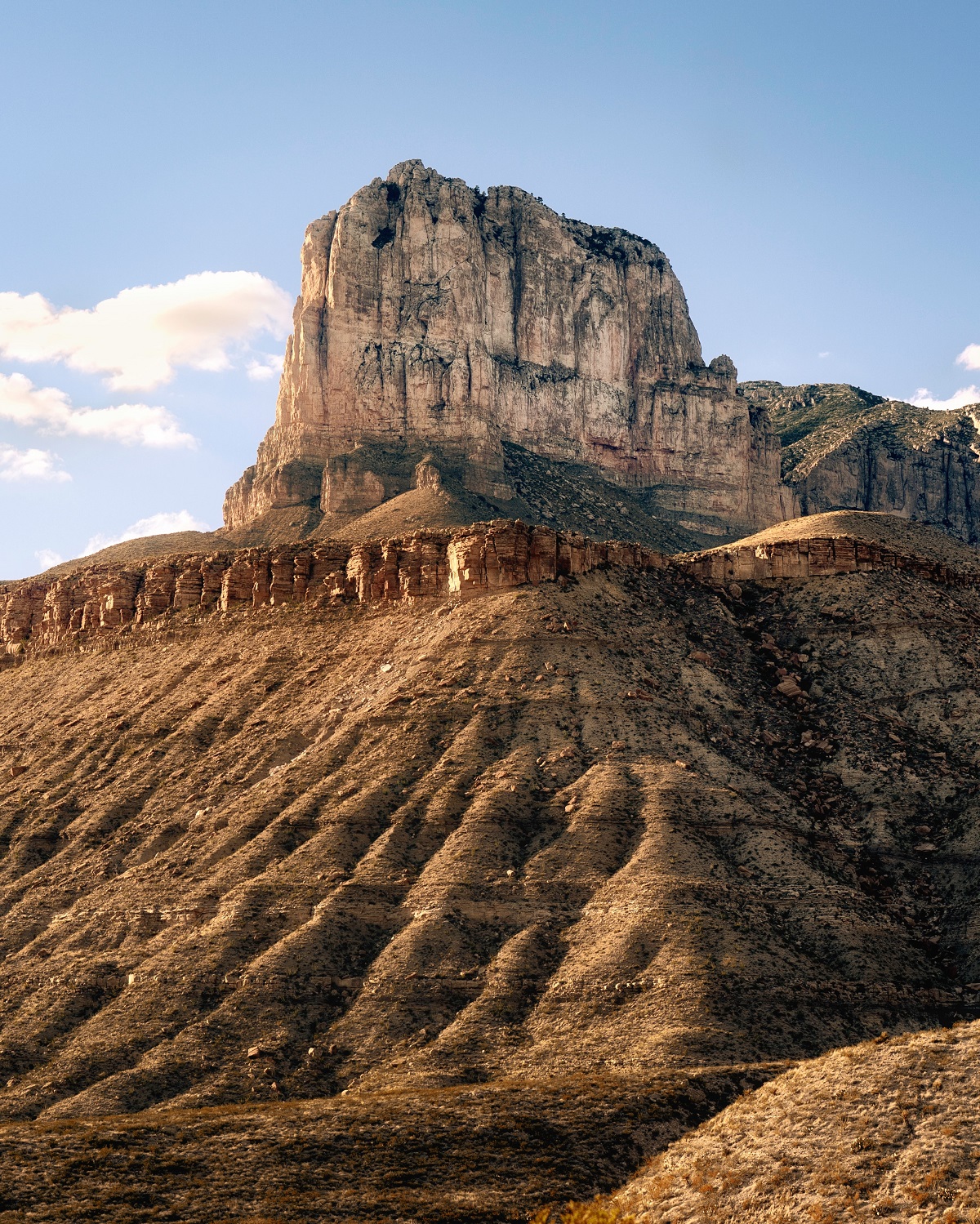
One of the most recognizable sights in the entire park is the sheer rock face of El Capitan, which can be clearly seen erupting from the flat surroundings of the Chihuahuan Desert from Highway 67. The sheer magnitude of this summit makes for great sightseeing or backdrops for photographs.
Though it is possible to hike to the summit of El Capitan, it involves some route finding as the trail is not well maintained or well marked in some spots and should be reserved for advanced hikers with route finding skills only. It is a challenging hike of over 9 miles roundtrip and 1,600 feet of elevation gain.
If you are an experienced hiker, this challenging yet fulfilling hike is one of the best things to do in Guadalupe Mountains National Park.
8. Camp at the Pine Springs Campground or Dog Canyon Campground
There are two developed campgrounds in Guadalupe Mountains National Park, each highlighting a different region and characteristics of the park.
The Pine Springs Campground is located immediately adjacent to the Pine Springs Visitor Center, at the base of Guadalupe Peak. The surrounding environment is mostly open desert, with minimal shade and more wind.
Meanwhile, the Dog Canyon Campground is located on the north side of the park, at higher elevation and sheltered beneath cliffs. This equates to more shade, cooler temperatures, and some protection from the west Texas winds.
There is a third campground for horse users, the Frijole Horse Corral Campground.
All campgrounds are reservable online.
9. Check out the Pine Springs Visitor Center
A visit to the Pine Springs Visitor Center allows guests to learn more about the park through the center’s exhibits, as well as chat with rangers and get information on camping, hiking, or backpacking.
10. Backpack at Guadalupe Mountains National Park
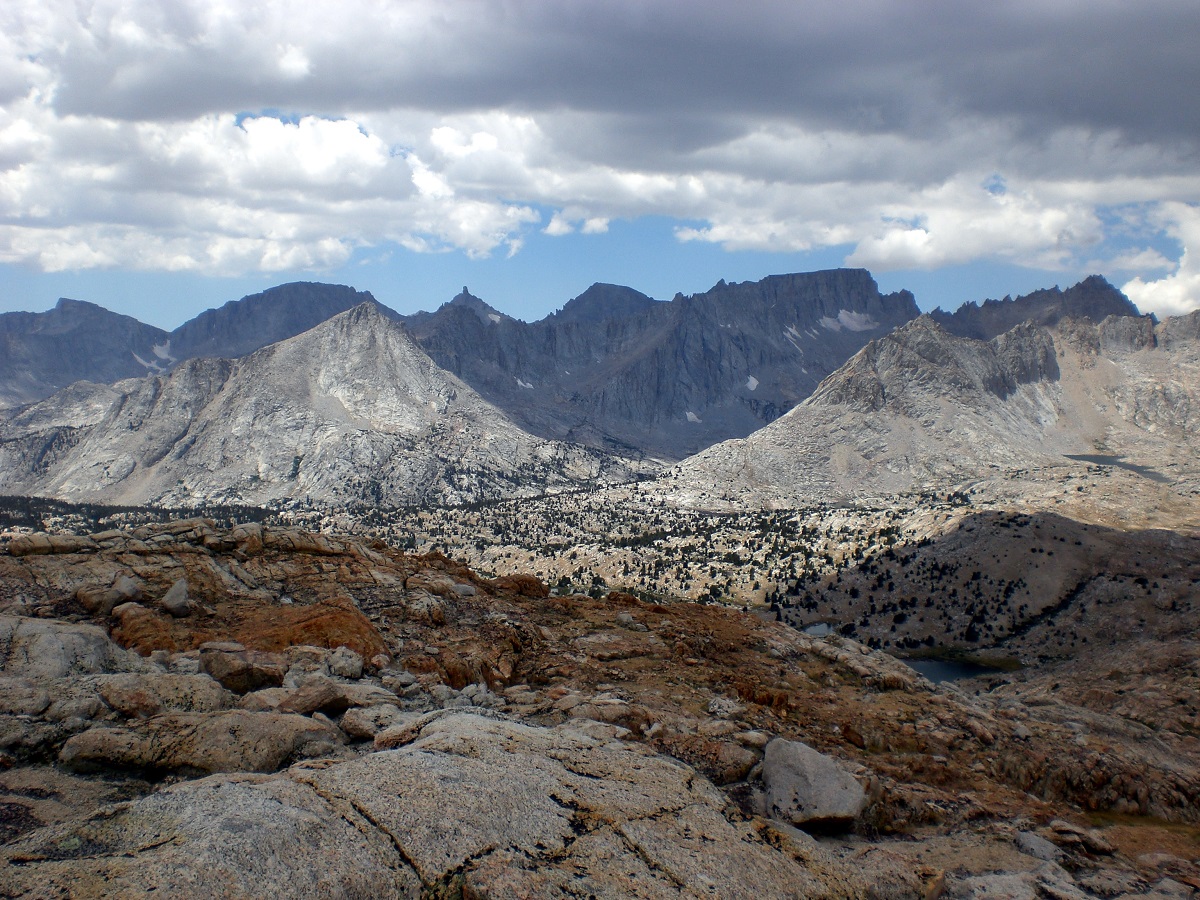
If you are looking for a trek with a little more challenge or longevity, there are plenty of overnight backpacking opportunities on Guadalupe Mountains National Park’s trails. Some popular backpacking routes include the Tejas Trail, Hunter Peak, McKittrick Canyon, and even Guadalupe Peak, with its primitive campsite just below the summit, which harbors the potential for a breathtaking sunrise or sunset.
Backcountry camping requires a wilderness permit, which can be obtained from the Visitor Center.
11. See other nearby attractions
With a visit to Guadalupe Mountains National Park, you have the chance to check off TWO National Parks of the southwest within close proximity to each other. Located only 30 minutes away from Guadalupe Mountains National Park lies Carlsbad Caverns National Park, New Mexico.
At this national park, you can witness mesmerizing limestone formations, hike through vast chambers, and see a breathtaking bat flight spectacle. This subterranean wonderland promises a unique adventure beneath the New Mexico desert.
Guadalupe Mountains National Park offers a serene escape into the heart of the Texas desert, where you can explore breathtaking landscapes, hike challenging trails, and immerse yourself in nature’s wonders. Whether you’re seeking adventure or tranquility, this park has something for everyone. Plan your visit, pack your hiking boots, and get ready to experience the beauty of Guadalupe Mountains National Park.
That concludes our guide on the best things to do in Guadalupe Mountains National Park! Do you have other suggestions or comments? Let us know in the comment section below!


